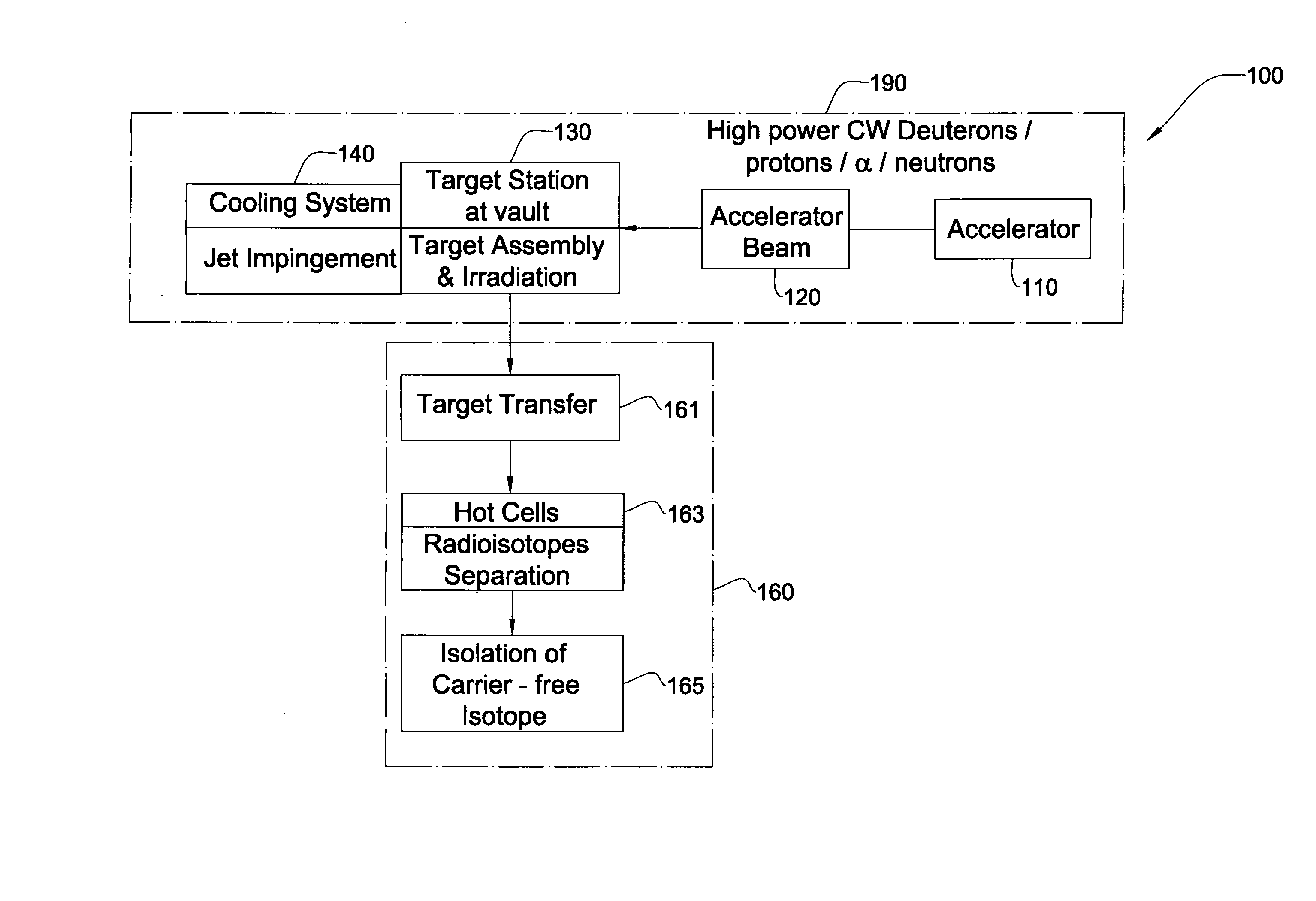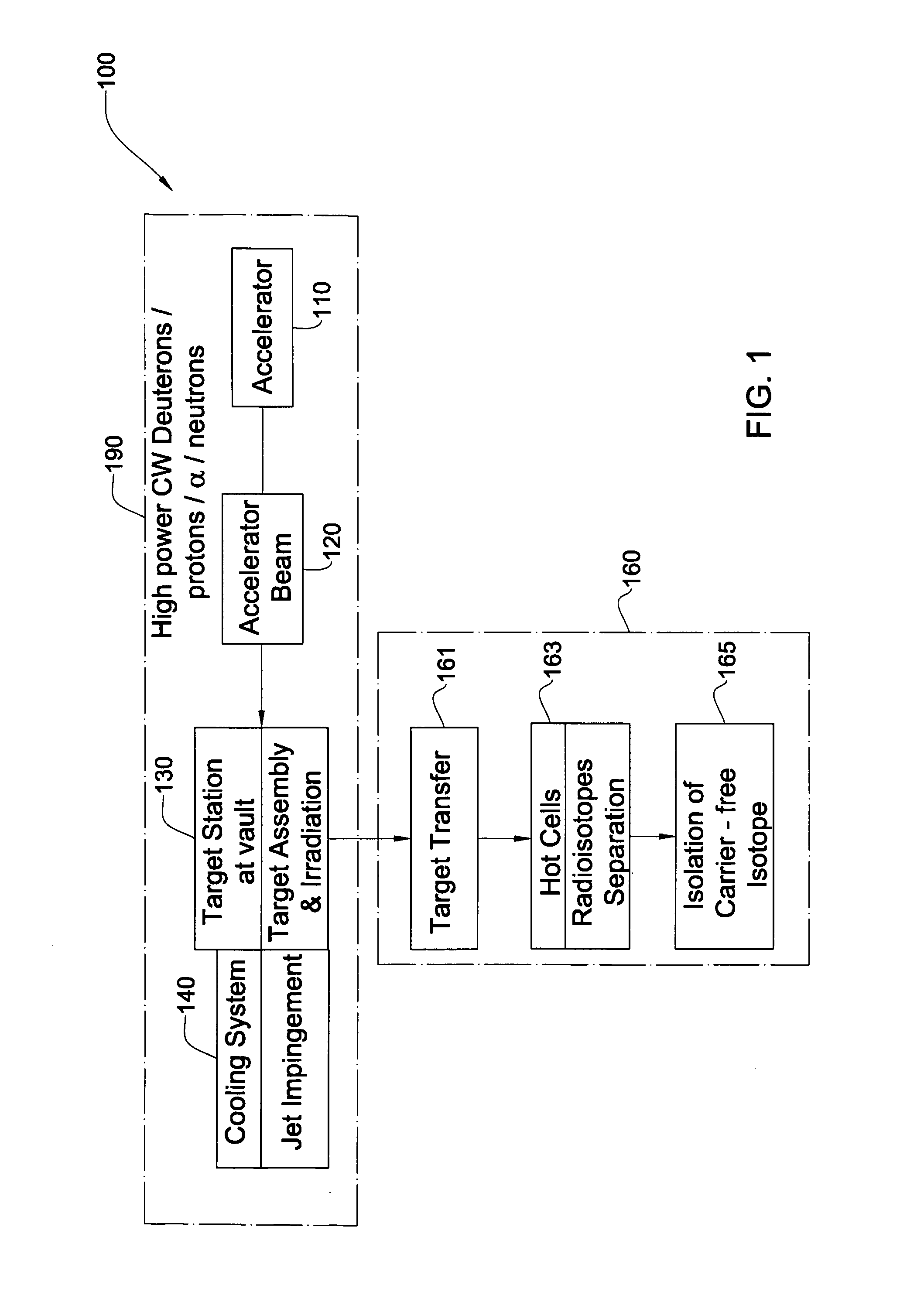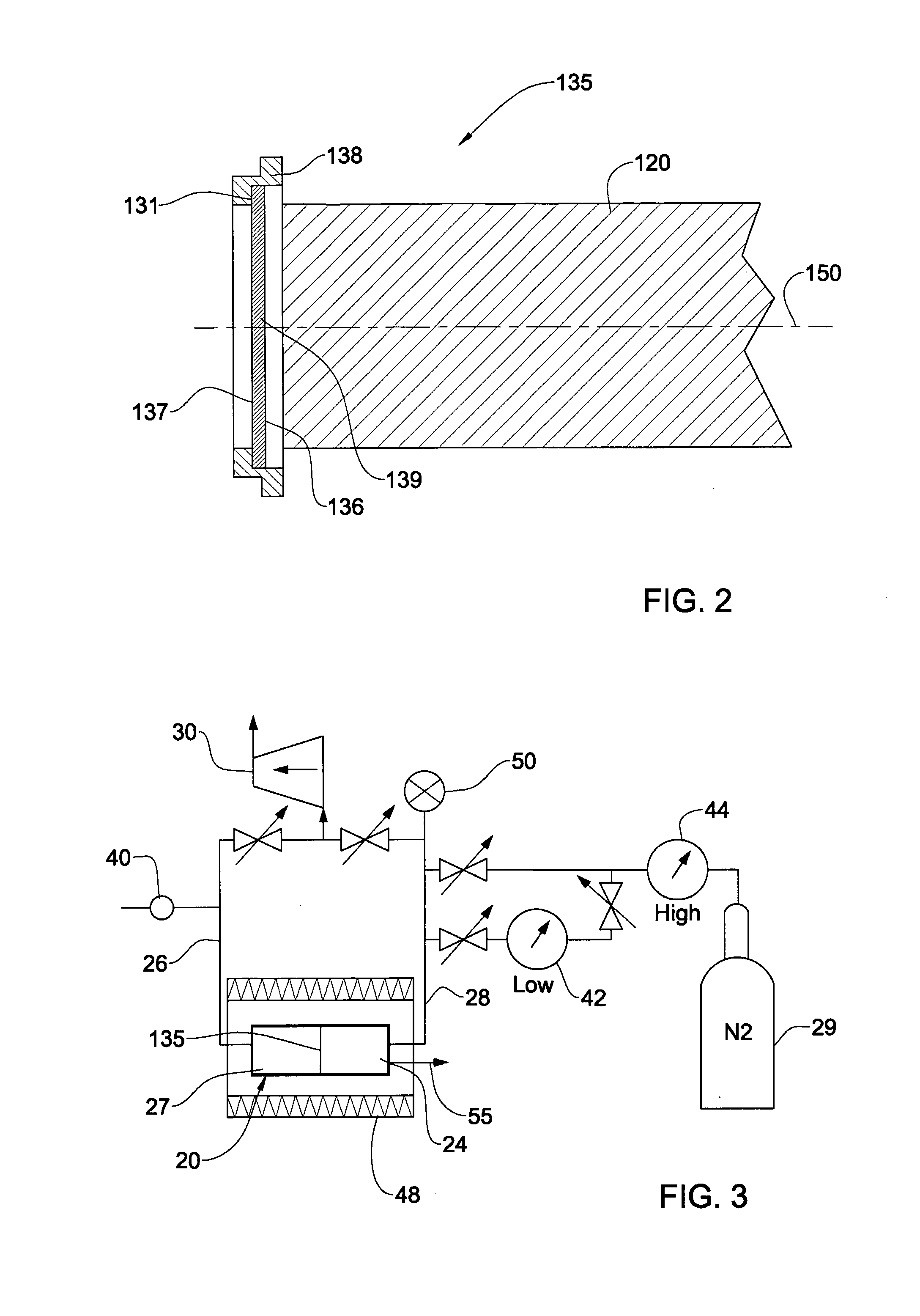Method And System For Production Of Radioisotopes, And Radioisotopes Produced Thereby
a radioisotope and radioisotope technology, applied in chemical to radiation conversion, nuclear elements, nuclear engineering, etc., can solve the problems of irradiation time, high cost, and inability to produce prior art particle accelerators, and achieve the effect of preventing contamination or communication
- Summary
- Abstract
- Description
- Claims
- Application Information
AI Technical Summary
Benefits of technology
Problems solved by technology
Method used
Image
Examples
example 1
Production of Carrier-Free Lutetium 177 (177Lu)
[0118] a. Irradiation Step
[0119] A natural ytterbium (176Yb) foil (provided from Goodfellow Inc, UK, 99.99% pure), dimensions of the foil are: 100×13 mm, and 100-250 micron thick, and is irradiated by a deuteron beam at a continuous wave (cw) current of up to 2 mA according to the invention. The irradiation energy is 15-20 MeV (power=30 to 40 kW, power density 2.3 to 3.0 kW / cm2)
[0120] The irradiation time is 10 hours. The foil is cooled at its back side by eutectic mixture of Indium-Gallium (about 24.5 / 75.5 ratio respectively). Following the irradiation the target-foil is disconnected from the cooling system and transferred to a chemistry processing hot cell.
[0121] b. Purification Process
[0122] Target Dissolution
[0123] The irradiated ytterbium target is transferred to a hot cell according to the invention and immersed 1N HCl for 1 hour until complete dissolution of the foil occurs.
[0124] Chemical Separation of Lutetium From Ytter...
example 2
Production of Palladium 103 (Pd-103)
[0132] a. Irradiation Step
[0133] A natural rhodium (103Rh) foil (provided from Johnson Matthey Noble Metals Inc., 99.99% pure) is used as a target for irradiation. The foil is oval with dimensions of 100×12 mm, and 150-250 μm thick. The foil is irradiated by a deuteron beam in a continuous wave (cw) current of up to 2 mA according to the present invention. The irradiation energy is 17 MeV and irradiation time is 12-36 hours (power=34 kW, power density 2.8 kW / cm2)
[0134] The foil is cooled on its back side by eutectic mixture of indium-gallium (about 24.5 / 75.5 ratio respectively)
[0135] Following the irradiation the target is disconnected from the cooling system, and transferred for chemical processing in a hot cell.
[0136] b. Purification Process
[0137] The purification step (chemical) includes two major steps: (I) target dissolution, and (II) chemical separation between palladium and rhodium,
[0138] Target Dissolution
[0139] The target is disso...
PUM
 Login to View More
Login to View More Abstract
Description
Claims
Application Information
 Login to View More
Login to View More - R&D
- Intellectual Property
- Life Sciences
- Materials
- Tech Scout
- Unparalleled Data Quality
- Higher Quality Content
- 60% Fewer Hallucinations
Browse by: Latest US Patents, China's latest patents, Technical Efficacy Thesaurus, Application Domain, Technology Topic, Popular Technical Reports.
© 2025 PatSnap. All rights reserved.Legal|Privacy policy|Modern Slavery Act Transparency Statement|Sitemap|About US| Contact US: help@patsnap.com



